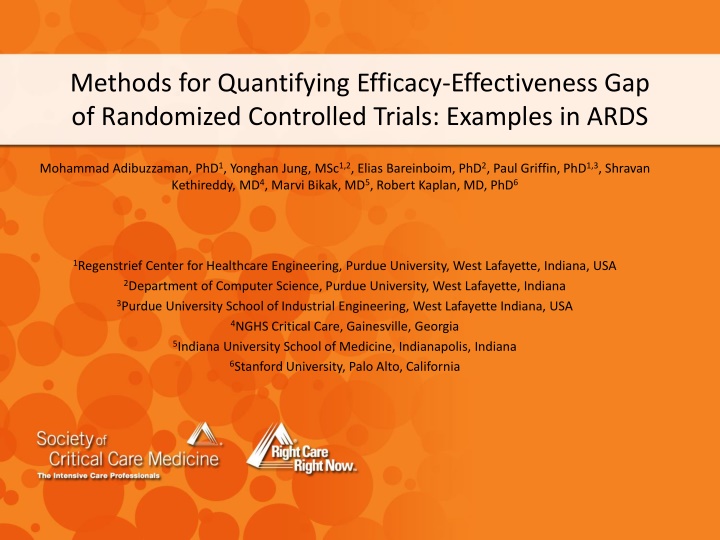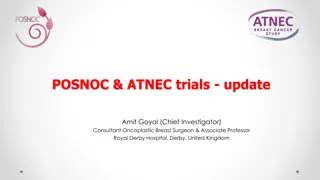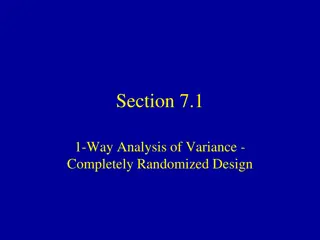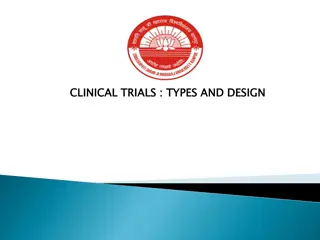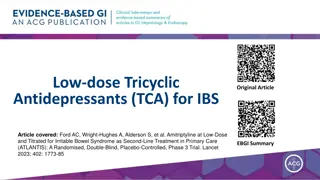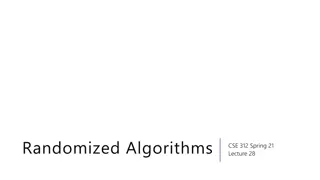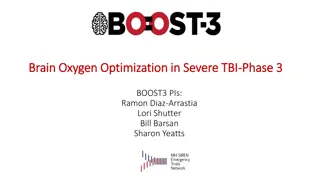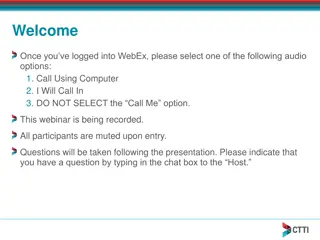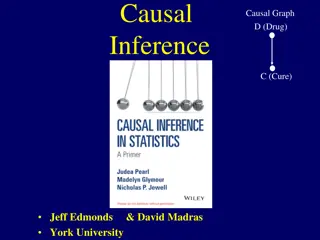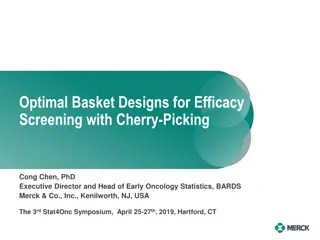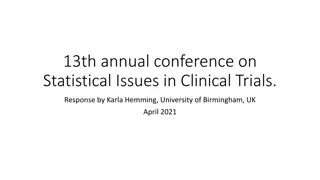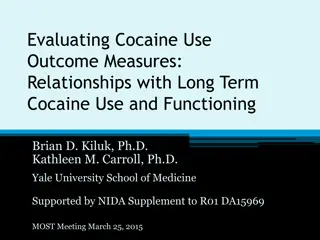Methods for Quantifying Efficacy-Effectiveness Gap in Randomized Controlled Trials
This research discusses the quantification of the efficacy-effectiveness gap in randomized controlled trials (RCTs), particularly focusing on examples in Acute Respiratory Distress Syndrome (ARDS). It explores the challenges of RCTs, ethical considerations, and the use of observational data for causal inference. Various methods and approaches for bridging the gap between RCTs and real-world effectiveness are outlined, emphasizing the importance of adjusting for confounding variables in causal inference frameworks using observational data.
Download Presentation

Please find below an Image/Link to download the presentation.
The content on the website is provided AS IS for your information and personal use only. It may not be sold, licensed, or shared on other websites without obtaining consent from the author.If you encounter any issues during the download, it is possible that the publisher has removed the file from their server.
You are allowed to download the files provided on this website for personal or commercial use, subject to the condition that they are used lawfully. All files are the property of their respective owners.
The content on the website is provided AS IS for your information and personal use only. It may not be sold, licensed, or shared on other websites without obtaining consent from the author.
E N D
Presentation Transcript
Methods for Quantifying Efficacy-Effectiveness Gap of Randomized Controlled Trials: Examples in ARDS Mohammad Adibuzzaman, PhD1, Yonghan Jung, MSc1,2, Elias Bareinboim, PhD2, Paul Griffin, PhD1,3, Shravan Kethireddy, MD4, Marvi Bikak, MD5, Robert Kaplan, MD, PhD6 1Regenstrief Center for Healthcare Engineering, Purdue University, West Lafayette, Indiana, USA 2Department of Computer Science, Purdue University, West Lafayette, Indiana 3Purdue University School of Industrial Engineering, West Lafayette Indiana, USA 4NGHS Critical Care, Gainesville, Georgia 5Indiana University School of Medicine, Indianapolis, Indiana 6Stanford University, Palo Alto, California
Randomized Controlled Trials Treatment (do(X=1)) Intervention (Case) group RCT: Randomized Controlled Trial Ethical/safety issues Limited samples Cost or simply not possible Randomly split into 2 groups Outcomes are measured and compared at the End Treatment (do(X=0)) Control group = healthy (Y=1) = sick (Y=0) CAUSAL INFERENCE USING OBSERVATIONAL DATA Objective: conduct virtual experimental study by using 1) clinical knowledge and 2) observational data 2
Approach Efficacy-effectiveness gap Difference between RCT and real world Approach Step 1: Reproduce the results of RCT from observational data using strict inclusion exclusion criteria and Structure Causal Model Step 2: Transportability of Inference Generate results for the broader population with relaxed inclusion-exclusion criteria. 3
To Adjust or not to Adjust Graphical representation of causal models Co-variate selection using backdoor criterion from graphical models 4
Causal Inference Framework using Observational Data RCT 1: ARMA trial (ARDS Network 2000) RCT2:ALVEOLI trial (ARDS network 2004) RCT3: ACURASYS trial (Papazian 2010) Causal question: Low tidal volume (??= 6) (with low PP value setting) improve survival rate (? = 1)? Causal question: High Positive End Expiratory Pressure (PEEP) value improve survival rate? Causal question: NMBA (cisatracurium) treatment improve survival rate of severe ARDS patients? MIMIC III OPEN INTENSIVE CARE UNIT DATA FROM BETH ISRAEL Waveform Database Clinical Database 58,000 Hospital Admission 2001-2012 Nurse entered physiology Medications Laboratory data Nursing notes Discharge notes Format: CSV, SQL ~40GB Matched Subset 23,180 Records 2001-2012 Waveforms ECG Blood pressure Plethysmography Format: Text, Matlab ~3TB Compressed 4,897 Waveform and 5,266 Numeric records matched with 2,809 clinical records 5
RCT 1: ARMA trial (ARDS Network 2000) RCT2:ALVEOLI trial (ARDS network 2004) RCT3: ACURASYS trial (Papazian 2010) Causal question: Low tidal volume (??= 6) (with low PP value setting) improve survival rate (? = 1)? Causal question: High Positive End Expiratory Pressure (PEEP) value improve survival rate? Causal question: NMBA (cisatracurium) treatment improve survival rate of severe ARDS patients? 6
RCT 1: ARMA trial (ARDS Network 2000) RCT2:ALVEOLI trial (ARDS network 2004) RCT3: ACURASYS trial (Papazian 2010) Causal question: Low tidal volume (??= 6) (with low PP value setting) improve survival rate (? = 1)? Causal question: High Positive End Expiratory Pressure (PEEP) value improve survival rate? Causal question: NMBA (Cisatracurium) treatment improve survival rate of severe ARDS patients? 7
Summary and Next Steps We developed methods to reproduce results from RCT The methods need to be improved with the time dependent protocol of RCT Apply the method for relaxed inclusion-exclusion criteria to compute the efficacy-effectiveness gap. 8
